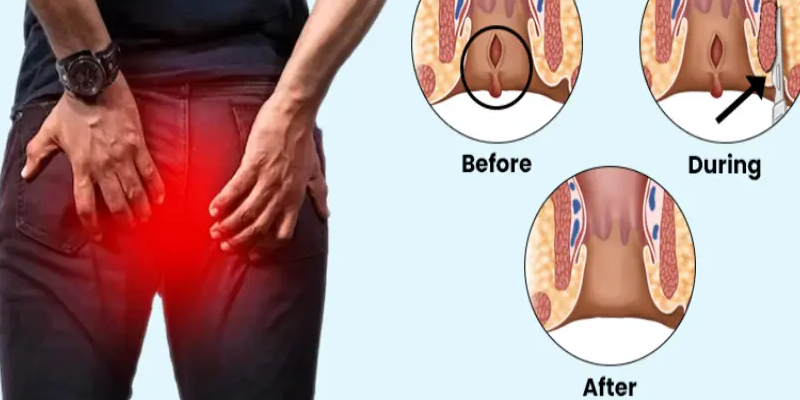
Fissure (Open Surgery and Laser Treatment)
An anal fissure is a small tear or cut in the lining of the anus, which can cause sharp pain, bleeding, and discomfort during or after bowel movements. It is a common condition that affects people of all ages and can be caused by chronic constipation, passing hard stools, prolonged diarrhea, or straining during bowel movements. In many cases, fissures heal with home remedies, but some become chronic and require medical or surgical intervention. Today, two effective treatment options for persistent fissures are open surgery and laser treatment.
Causes and Symptoms
Anal fissures often result from trauma to the anal canal. Common causes include passing large or hard stools, chronic constipation, childbirth, and anal intercourse. People with underlying conditions like Crohn’s disease or infections may also develop fissures.
Symptoms of an anal fissure include:
– Sharp, burning pain during or after a bowel movement
– Visible cracks or tears around the anal area
– Bright red blood on the toilet paper or stool
– Itching, irritation, or discomfort in the anal region
– A small lump or skin tag near the tear (in chronic cases)
Open Surgery for Fissure
Open surgery, also known as lateral internal sphincterotomy, is a traditional and highly effective procedure used for treating chronic anal fissures. During the procedure, a small portion of the internal anal sphincter muscle is cut to reduce tension and allow the fissure to heal. The surgery is usually performed under local or general anesthesia and takes about 20 to 30 minutes.
Benefits of open surgery include:
– High success rate
– Long-term relief from symptoms
– Effective for chronic and recurring fissures
– Can be done as a daycare procedure
While open surgery is very effective, some patients may experience temporary side effects such as mild incontinence to gas or stool, which typically resolves over time with healing and pelvic floor exercises.
Laser Treatment for Fissure
Laser surgery is a modern, minimally invasive option for treating anal fissures. In this technique, a laser beam is used to make precise incisions and reduce pressure on the sphincter muscle, promoting healing while minimizing damage to surrounding tissues. The procedure causes less pain and bleeding and has a shorter recovery period compared to open surgery.
Advantages of laser treatment:
– Minimally invasive and virtually painless
– Faster healing and recovery
– Minimal bleeding and no stitches
– Lower risk of complications
– Performed as an outpatient or daycare procedure
Choosing the Right Treatment
The choice between open surgery and laser treatment depends on several factors such as the severity of the fissure, the patient’s health condition, age, lifestyle, and doctor’s recommendation. Both options are effective and offer long-term relief, but laser treatment is becoming increasingly popular due to its faster recovery and minimal discomfort.
Final Thoughts
Living with an anal fissure can be painful and frustrating, but the good news is that effective treatment options are available. Whether you opt for traditional open surgery or modern laser treatment, both methods aim to relieve pain, promote healing, and restore your comfort. If you’re dealing with persistent symptoms, don’t hesitate to consult a qualified colorectal or general surgeon to discuss the best course of action for your needs.

